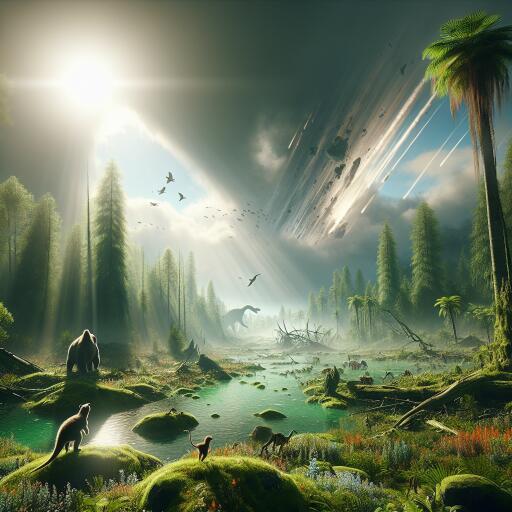
Life Rebounded Quickly After Dinosaur-Killing Impact
New research suggests that the site where the asteroid struck Earth, which led to the extinction of the dinosaurs, actually fostered a vibrant ecological environment for at least 700,000 years. This resurgence was largely supported by a continuous hydrothermal system that enriched the ocean with essential nutrients.
According to scientists, the activity following the asteroid’s impact was pivotal in aiding marine life. An expert stated, “The Gulf of Mexico reveals an ecological recovery distinct from the global ocean due to constant hydrothermal activity, creating a singular marine environment.”
In 2016, a significant scientific expedition yielded 829 meters of rock core from the Chicxulub crater. These samples have proven critical in uncovering how rapidly life reappeared in the aftermath of this colossal impact. Previous studies showed life returned shortly after the impact, but the latest findings indicate that the crater’s hydrothermal system persisted, significantly nurturing the ocean above it for hundreds of thousands of years.
One researcher noted, “We are coming to understand the crucial role that impact-generated hydrothermal systems play in biological recovery. This study advances our knowledge of how such events can influence ocean life over extensive periods.”
The study utilized osmium, an element connected to the asteroid, to trace underwater activity. By analyzing isotopes, researchers determined that osmium from the impactor had been carried by hydrothermal fluids beneath the seafloor and subsequently deposited into ocean sediments.
As these heated waters cooled, they released osmium into the environment. Scientists discovered osmium-rich layers in their core samples, helping them chart the duration and influence of the hydrothermal system. They observed a direct relationship between osmium levels and changes in marine plankton, with nutrient-rich plankton flourishing during active hydrothermal periods.
The analysis marks the point at which the hydrothermal system ceased to affect ocean life, although the system is believed to have continued beneath the seafloor for millions of years, eventually covered by sediment.
“This research demonstrates that although impact cratering is mainly destructive, it can also instigate significant hydrothermal activity,” one expert explained. “In the case of Chicxulub, this activity was crucial for the swift recovery of marine ecosystems.” This insight sheds light on the dual nature of impact events, hinting at their potential to foster life as well as destroy.
Further research at a planetary systems habitability center is exploring whether similar hydrothermal systems might exist elsewhere in the universe, potentially nurturing extraterrestrial life.
This study reflects the collaborative efforts of scientists from numerous esteemed institutions worldwide.





Leave a Reply